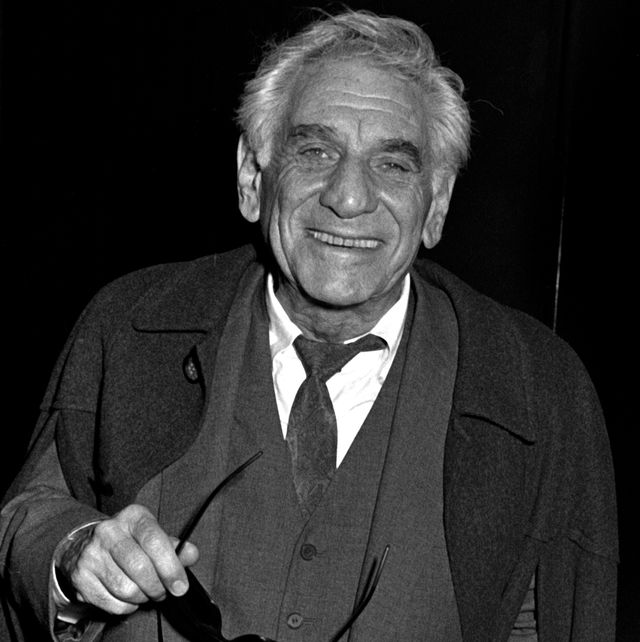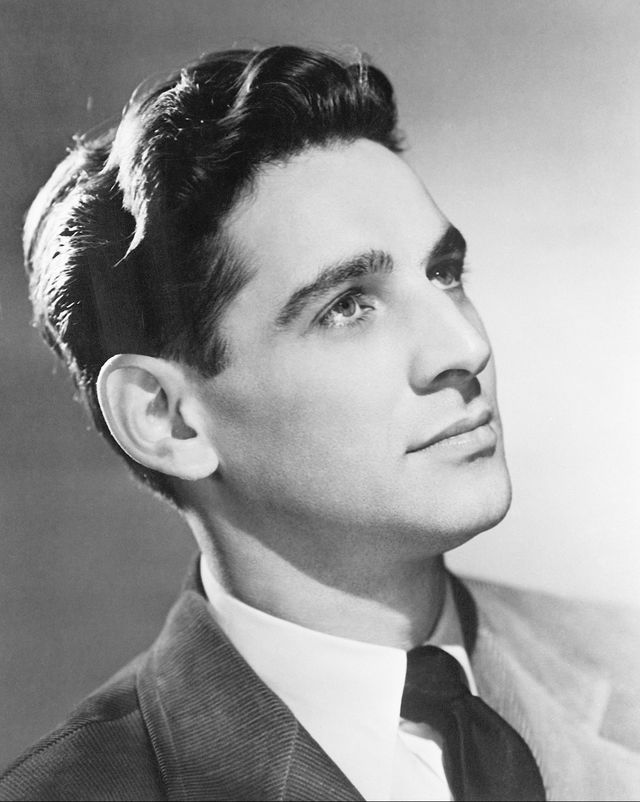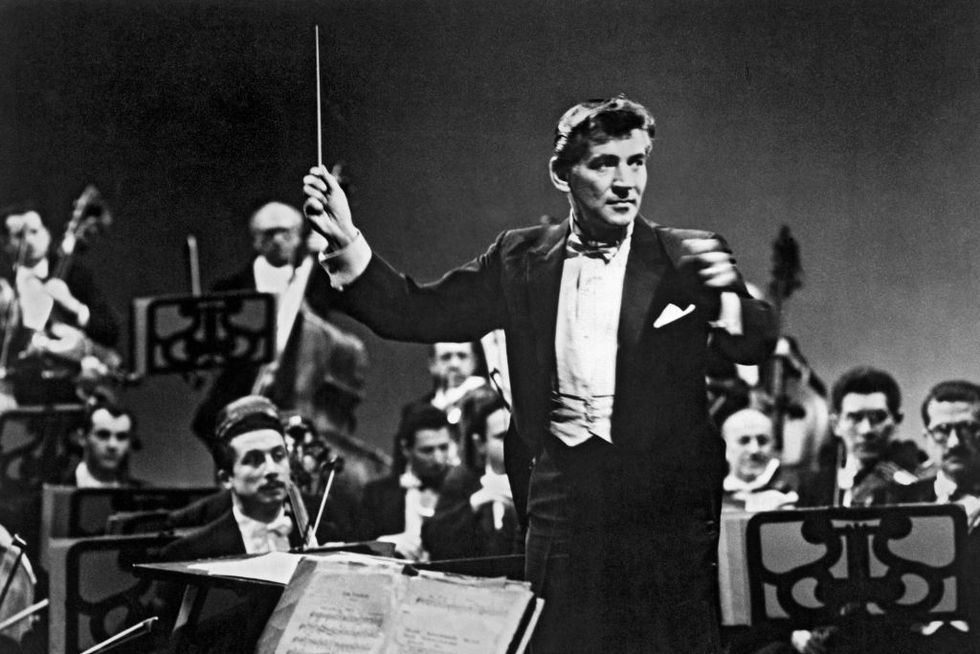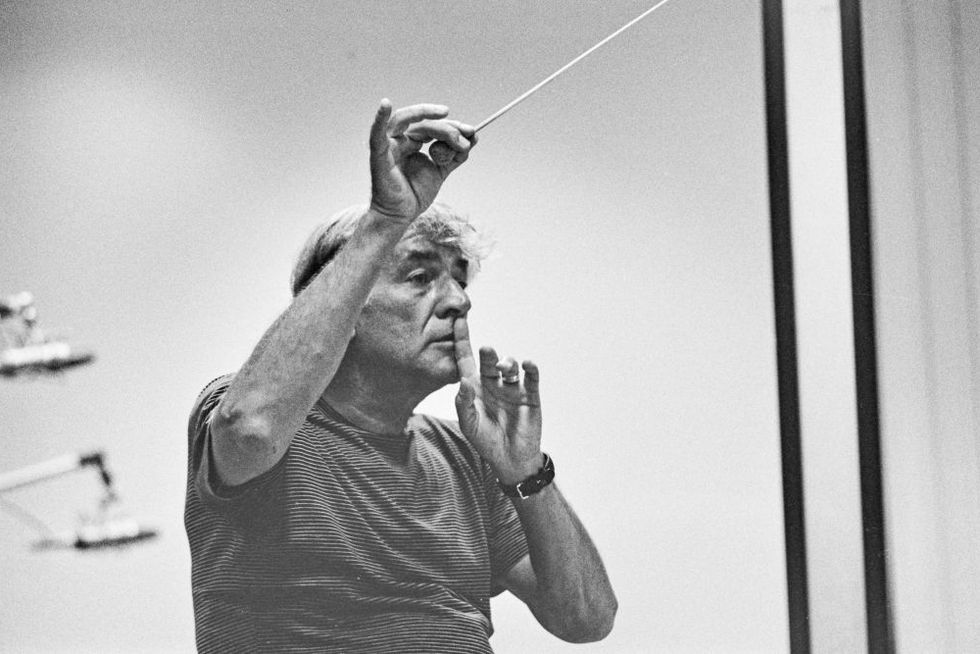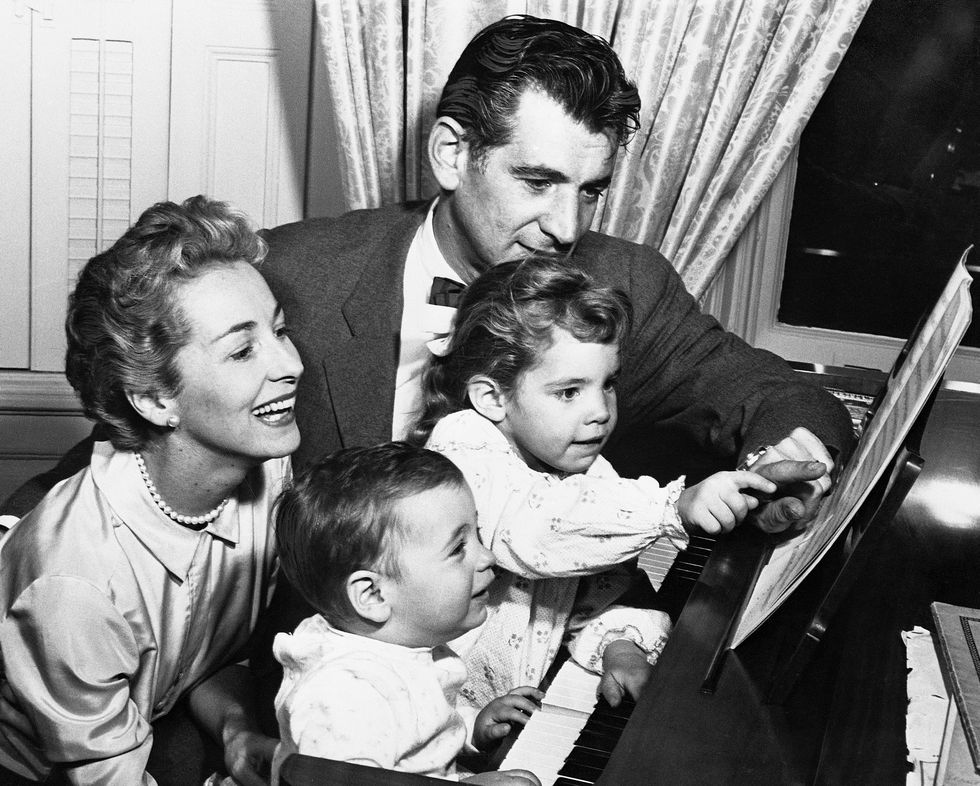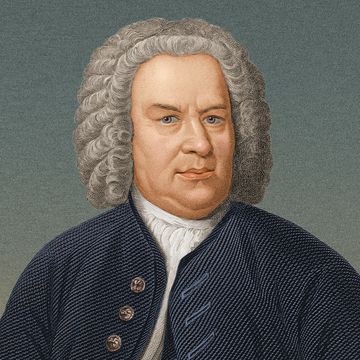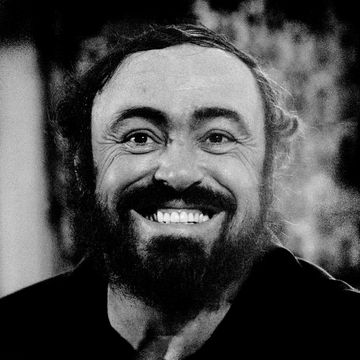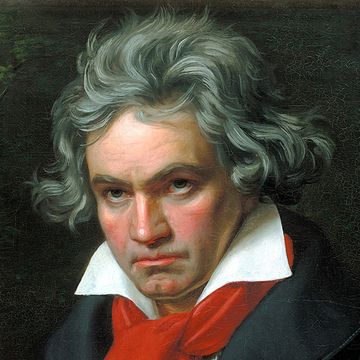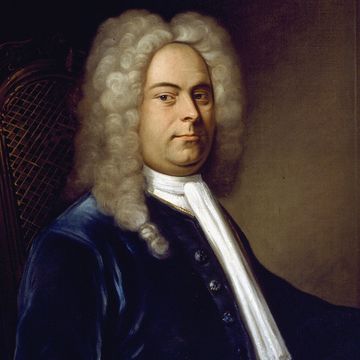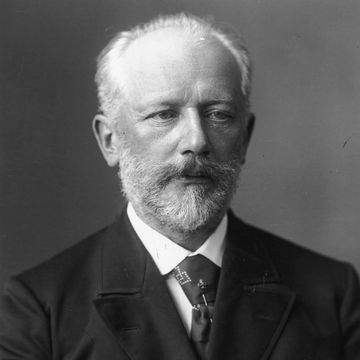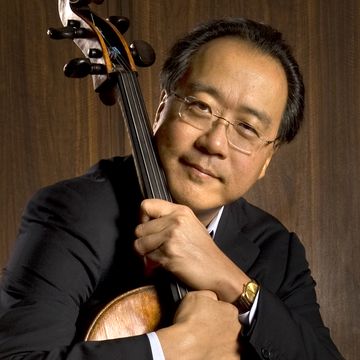1918-1990
Latest News: Leonard Bernstein Movie Maestro Streaming on Netflix
Bradley Cooper and Carey Mulligan star as Leonard Bernstein and Felicia Montealegre in the new movie Maestro, which focuses on the couple’s relationship and marriage, as well as Bernstein’s career. Directed by Cooper and produced by Steven Spielberg and Martin Scorsese, the film is now streaming on Netflix. Maestro has already generated some controversy, as some people suggested Cooper’s use of a large prosthetic nose for the role was an example of anti-Semitic “Jewface.” Others, however, defended the movie, including Bernstein’s children, the Anti-Defamation League, and Cooper.
Who Was Leonard Bernstein?
Leonard Bernstein was one of the most celebrated and acclaimed composers of the 20th century. Best known for composing the Broadway musical West Side Story, his inspired and voracious conducting style led to his big break conducting the New York Philharmonic in 1943. He was one of the first American-born conductors to lead world-class orchestras and achieve global fame. Bernstein composed many works, including musicals like On the Town and Wonderful Town, operas like Candide, and large-scale musical pieces like Mass. After battling emphysema, he died at age 72 in 1990.
Quick Facts
FULL NAME: Leonard Bernstein
BORN: August 25, 1918
BIRTHPLACE: Lawrence, Massachusetts
DIED: October 14, 1990
SPOUSE: Felicia Cohn Montealegre Bernstein (1951-1978)
CHILDREN: Jamie, Alexander, and Nina
ASTROLOGICAL SIGN: Virgo
Early Life and Education
Leonard Bernstein was born on August 25, 1918, in Lawrence, Massachusetts. His birth name was Louis, a name his grandmother adored, but his family always called him Lenny or Leonard, which he officially renamed himself at age 16.
His father, Sam Bernstein, was a Russian immigrant who in his native Ukraine was destined to become a rabbi. Once he arrived and settled on New York City’s Lower East Side, the elder Bernstein took up working as a fish cleaner. He eventually got a job sweeping floors in his uncle Henry’s barbershop and then landed a position stocking wigs for a dealer. Sam eventually built a rather profitable business distributing beauty products. Leonard grew up understanding that business and success were paramount, and “occupations” in the field of music and art were simply off-limits.
Bernstein first played piano, one belonging to his aunt Clara, when he was 10. Clara was going through a divorce and needed a place to store her massive upright piano. Lenny loved everything about the instrument, but his father refused to pay for lessons. Determined, the boy raised his own small pot of money to pay for a few sessions. He was a natural from the start, and by the time his bar mitzvah rolled around, his father was impressed enough to buy him a baby grand piano. The young Bernstein found inspiration everywhere and played with a voracity and spontaneity that impressed anyone who listened.
Bernstein attended Boston Latin School, where he met his first real teacher and his lifelong mentor, Helen Coates. After graduating, he entered Harvard University, where he studied music theory with Arthur Tillman Merritt and counterpoint with Walter Piston. In 1937, Bernstein attended a Boston Symphony concert conducted by Dmitri Mitropoulos. Bernstein’s heart sang when he saw the bald Greek man gesture with his bare hands, exuding a rare kind of enthusiasm for every score. At a reception the next day, Mitropoulos heard Bernstein play a sonata, and he was so moved by the young man’s abilities that he invited him to attend his rehearsals. Bernstein spent a week with him. After the experience, he was determined to make music the center of his life.
To strengthen his technical skills, Bernstein spent a year of intensive training at the Curtis Institute of Music in Philadelphia. He studied conducting with Fritz Reiner, a man who believed in mastering every detail of every piece. Bernstein benefited from the discipline, but he believed in more than the mechanics. In 1940, when he was 22, the Berkshire Music Center at Tanglewood invited Bernstein to join some 300 other talented students and professional musicians for a summer of musical exploration and performance. He was one of only five students accepted in the master class in conducting that was taught by the famed Serge Koussevitzky. The man became a father figure to Bernstein, encouraging his belief in the power and importance of music.
Early Conducting Career
Despite Bernstein’s passion and brilliance, he found himself out of work after the summer at Tanglewood. He took odd jobs transcribing music for a while, but then out of pure luck, he was offered an incredible opportunity. Due to the war draft, very few able musicians remained stateside. When the New York Philharmonic sought an assistant conductor, Bernstein accepted the position from conductor Artur Rodzinski. Bernstein was the first American and youngest person to become assistant conductor. On November 14, 1943, the symphony’s guest conductor, the very prestigious Bruno Walter, had fallen ill. Rodzinski, able but generous, ordered Bernstein to step up and conduct that afternoon’s concert.
Step up he did. The young conductor amazed his crowd and his players. Ecstatic applause inspired The New York Times to publish an article about his performance, writing: “It’s a good American success story. The warm, friendly triumph of it filled Carnegie Hall and spread far over the airwaves.” The story was reprinted in newspapers around the country, and Bernstein became a respected conductor overnight, one who would lead the Philharmonic 11 times by the end of the season.
Over the next several years, he conducted the New York City Center orchestra and appeared as a guest conductor across the United States, Europe, and Israel. He developed his first Broadway musical, On the Town, in 1944, adapting it from a ballet called Fancy Free that he had earlier developed with choreographer Jerome Robbins, about three young sailors on leave in New York City. The show was a success, and Gene Kelly and Frank Sinatra went on to star in the 1949 film adaptation.
Bernstein conducted in Tel Aviv in 1947, the first of many collaborations with the Israel Philharmonic Orchestra. The next year, shortly after the Israeli Army captured the city of Beersheba during the Arab-Israeli War, Bernstein and his orchestra rode through the desert in an armored bus to play a concert for troops and settlers there, according to the biography Leonard Bernstein by Humphrey Burton.
In 1949, Bernstein conducted the Boston Symphony Orchestra in a concert televised on NBC celebrating the one-year anniversary of the United Nations’ ratification of the Universal Declaration of Human Rights. The concert, which included an address by former First Lady Eleanor Roosevelt, was Bernstein’s first television appearance and the first television broadcast from the famed Carnegie Hall.
West Side Story and Other Musicals
Leonard’s musical life continued to blossom, taking him on several international tours during the 1950s. In 1952, he founded the Creative Arts Festival at Brandeis University. He also found a love for teaching. The television shows Omnibus and Young People’s Concerts allowed him to speak to a whole new audience of music lovers.
The decade also saw Bernstein compose and pen lyrics for several operas and musicals, many of which went on to triumph amid acclaim. He wrote music and lyrics for the 1950 musical adaptation of the J.M. Barrie play Peter Pan, which was originally planned as a full musical but was ultimately staged with only seven songs and about 10 minutes of music, according to Leonard Bernstein: A Life by Meryle Secrest. Nevertheless, it was well-reviewed and became a great success, with Jean Arthur portraying Peter Pan and Boris Karloff performing the dual role of Captain Hook and George Darling.
Next, Bernstein wrote the musical Trouble in Tahiti (1951), a 45-minute two-character chamber piece about a bored, upper-middle-class couple. In 1953, Bernstein wrote the score for the musical Wonderful Town, about two sisters from Ohio who move to a basement apartment in New York City to seek respective careers as a writer and actor. Bernstein had just five weeks to compose the music, during which time he practically locked himself in his apartment with his playwrights Joseph A. Fields and Jerome Chodorov to focus on the work, according to the biographer Burton. The musical later won five Tony Awards, including Best Musical and Best Actress for star Rosalind Russell.
Bernstein worked on scores for two Broadway shows simultaneously in the mid-1950s. The first was the operetta Candide, based on a novella of the same name by Voltaire, which debuted in 1956 and closed after two months due to a poor box-office performance. The second was one of Bernstein’s most celebrated works: West Side Story, a musical inspired by William Shakespeare’s play in Romeo and Juliet.
West Side Story follows Tony and Maria as they navigate their budding romance amid a street gang rivalry between the Jets and the Sharks on Manhattan’s Upper West Side. “Everybody told us that the show was an impossible project,” Bernstein said, according to Something’s Coming, Something Good: West Side Story and the American Imagination by Misha Berson. “Besides, who wanted to see a show in which the first-act curtain comes down on two dead bodies lying on the stage?”
Collaborating with Jerome Robbins, Arthur Laurents, and the legendary Stephen Sondheim, Bernstein infused jazz and Latin rhythms into traditional orchestral tunes and extended dance sequences for the West Side Story score. Amid concerns that the music was too depressing or sophisticated for popular audiences, Bernstein fought back against other members of the creative team who wanted to cut some of the more complex operatic sequences. Bernstein’s instincts proved correct, as the show garnered unanimous rave reviews upon opening in 1957, earning six Tony Award nominations, including one for Best Musical, though that award went to The Music Man. West Side Story went to be adapted into a popular 1961 film, as well as another movie version in 2021 directed by Steven Spielberg.
New York Philharmonic
Bernstein became music director of the New York Philharmonic in 1957 and continued conducting and recording with the orchestra for the rest of his career. He introduced many innovations to the famous musical institution, championing little-known contemporary composers and hosting informal concerts which included Bernstein talking to the audience directly from the stage. He also extended his ongoing television teaching to the Philharmonic, televising the orchestra’s weekly Young People’s Concert on CBS, which exposed millions of viewers around the world to classical music and Bernstein’s musings, according to Leonard Bernstein: American Original by Burton Bernstein and Barbara B. Haws.
During one infamous incident at the New York Philharmonic, celebrated pianst Glenn Gould performed the Piano Concerto No. 1 in D minor by Johannes Brahms, playing at a slower tempo and more idiosyncratic approach than was typical. In an unusual move, Bernstein spoke directly to the audience about Gould’s unconventional approach, explaining he didn’t completely agree with it but felt it had artistic merit and warranted appreciation. Bernstein famously asked the crowd, “In a concerto, who is the boss: the soloist or the conductor?” This widely-publicized incident led to speculation of a rift between the conductor and the pianist, though Bernstein said he actually made the remarks “with Glenn’s encouragement.”
The New York Philharmonic moved to a new home in the Lincoln Center for the Performing Arts in the Upper West Side of Manhattan in 1962, with Bernstein conducting an opening night gala featuring the works of Ludwig Beethoven, Vaughan Williams, and Gustav Mahler. Bernstein was particularly passionate about Mahler’s work and was responsible for helping draw more mainstream attention to the Austrian late-19th century composer. After President John F. Kennedy was assassinated in 1963, Bernstein conducted Mahler’s Resurrection Symphony in a nationally televised memorial.
Late Career
Bernstein’s responsibilities with the New York Philharmonic left him little time for composing, though he took a year-long sabbatical from the orchestra in 1965 to compose Chichester Psalms. The extended choral composition features singing of text from the Book of Psalms in the original Hebrew. It became one of Bernstein’s most performed concert works, with more than 270 performances in 28 countries and in 30 American states.
Beginning in 1966, Bernstein regularly collaborated with the Vienna Philharmonic, conducting concerts and making several recordings of Maher’s symphonies with the orchestra. Also that year, Jacqueline Kennedy Onassis commissioned Bernstein to compose a work for the opening of the John F. Kennedy Center for the Performing Arts in Washington. The result was Mass, a large-scale theater piece based on the Tridentine Mass of the Catholic Church, according to Leonard Bernstein: A Life. Featuring liturgical passages sung mostly in Latin, the work features a chorus that grows disillusioned and doubtful about the role of God in their lives. Although it ends with an affirmation of faith, Mass proved controversial and generated mixed reviews upon first opening.
Bernstein continued to conduct, compose, teach, and produce television specials during the next two decades. He again collaborated with Jerome Robbins to create the 1974 ballet Dybbuk, based upon a play of the same name by the author and playwright S. Ansky. Another notable composition from this stage of Bernstein’s career was the 1983 opera A Quiet Place, a sequel to his 1951 opera Trouble in Tahiti. Debuting at the Houston Grand Opera, A Quiet Place was panned by critics, much to Bernstein’s great disappointment. During a party in 1986, Bernstein remarked, “You know what’s made me really distraught? I am only going to be remembered as the man who wrote West Side Story,” to which someone was heard to remark, “Well, that’s better than being remembered as the man who wrote A Quiet Place,” according to Leonard Bernstein: A Life.
Bernstein performed regularly at the Tanglewood music venue in the Berkshire Hills of western Massachusetts, conducting the Boston Symphony there in what proved to be his final concert in August 1990. Bernstein experienced pain and exhaustion during the show, suffering a coughing fit during the third movement of Beethoven’s Symphony No. 7, but he remained on stage and conducted until the concert was completed.
Wife and Sexuality
Bernstein met the Costa Rican-Chilean actor Felicia Montealegre at a party on February 5, 1947. The two were engaged a few months later, but they subsequently decided they weren’t ready for marriage and broke it off within less than a year. They later rekindled their romance, however, and wed in August 1951. The couple had three children named Jamie, Alexander, and Nina.
In the public eye, Bernstein seemed like a devoted husband and father, but in reality, he was engaged with multiple affairs with both men and women while married, according to Burton’s Leonard Bernstein. Montealegre, who knew of Bernstein’s reputation for affairs before marrying him, maintained a positive demeanor to the outside world, but his behavior put intense pressure on her. “You are a homosexual and may never change,” she wrote in a letter to Bernstein, adding, “Our marriage is not based on passion but on tenderness and mutual respect.”
Bernstein was torn about his bisexuality and engaged in years of therapy with the apparent hope of being “cured,” according to The New York Times. In describing his sexual attractiveness toward men, Bernstein wrote to his sister, “I have been engaged in an imaginary life with Felicia.”
In 1971, Bernstein met and fell in love with Tom Cothran, the music director of a San Francisco classical radio station, and five years later, he left Montealegre for him. Infuriated, she told Bernstein that he was “going to die a bitter and lonely old man,” according to Burton.
Shortly after their separation, Montealegre was diagnosed with lung cancer. Upon learning this, Bernstein returned to Montealegre and cared for her until her death on June 16, 1978, at age 56. Bernstein was heartbroken by the loss and never fully recovered, according to Leonard Bernstein: The Infinite Variety of a Musician by Peter Gradenwitz. He didn’t resume his romance with Cothran, though the two remained friends until Cothran died from AIDS in 1987, according to Burton.
Death
A longtime smoker, Bernstein battled emphysema late in his life. He died of a heart attack on October 14, 1990, at age 72. He was buried—with a copy of Gustav Mahler’s Fifth Symphony placed over his heart—at the Green-Wood Cemetery in Brooklyn, New York, alongside Montealegre.
In his obituary, The New York Times described Bernstein as "“one of the most prodigally talented and successful musicians in American history.” Several musical tributes were held around the world following Bernstein’s death. All of the New York Philharmonic’s programs immediately after his death were dedicated to Bernstein, and within hours of his death, the Sony Classical and Deutsche Grammaphon record companies announced they would release nearly 90 compact discs featuring his symphonic recordings.
Maestro Biopic
Bradley Cooper and Carey Mulligan star as Bernstein and Montealegre in the 2023 movie Maestro, which focuses on the couple’s relationship as well as Bernstein’s career. Directed by Cooper and produced by Steven Spielberg and Martin Scorsese, the biopic premiered at the Venice International Film Festival in early September 2023. Maestro was also shown at the David Geffen Hall in Lincoln Center—where Bernstein conducted the New York Philharmonic for many years—on October 2, making it the first movie presented there since the Hall’s recently completed renovations.
After casting Cooper as Bernstein, Spielberg also selected him to direct the movie after watching an early cut of Cooper’s directorial debut, A Star is Born (2018). At one point during the screening, Spielberg stood up, walked to Cooper, and shouted, “You’re f––ing directing Maestro!” The movie generated some controversy ahead its theatrical release, as some people suggested Cooper’s use of a large prosthetic nose for the role was an example of anti-Semitic “Jewface.” Others, however, defended the film, including Bernstein’s children. The Anti-Defamation League claimed the use of the prosthetic wasn’t an example of caricature or anti-Semitic propaganda.
After a limited theatrical release in November, Maestro began streaming on Netflix on December 20.
Quotes
- Music can name the unnameable and communicate the unknowable.
- In a concerto, who is the boss: the soloist or the conductor?
- You know what’s made me really distraught? I am only going to be remembered as the man who wrote West Side Story.
Fact Check: We strive for accuracy and fairness. If you see something that doesn’t look right, contact us!
Colin McEvoy joined the Biography.com staff in 2023, and before that had spent 16 years as a journalist, writer, and communications professional. He is the author of two true crime books: Love Me or Else and Fatal Jealousy. He is also an avid film buff, reader, and lover of great stories.
The Biography.com staff is a team of people-obsessed and news-hungry editors with decades of collective experience. We have worked as daily newspaper reporters, major national magazine editors, and as editors-in-chief of regional media publications. Among our ranks are book authors and award-winning journalists. Our staff also works with freelance writers, researchers, and other contributors to produce the smart, compelling profiles and articles you see on our site. To meet the team, visit our About Us page: https://www.biography.com/about/a43602329/about-us
